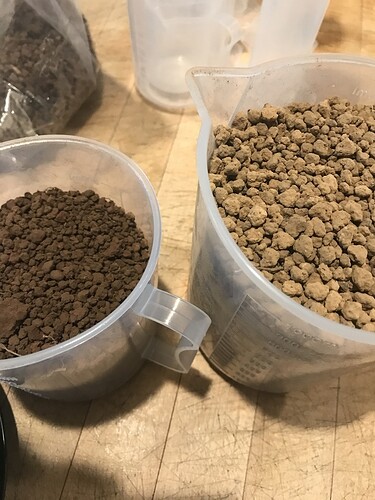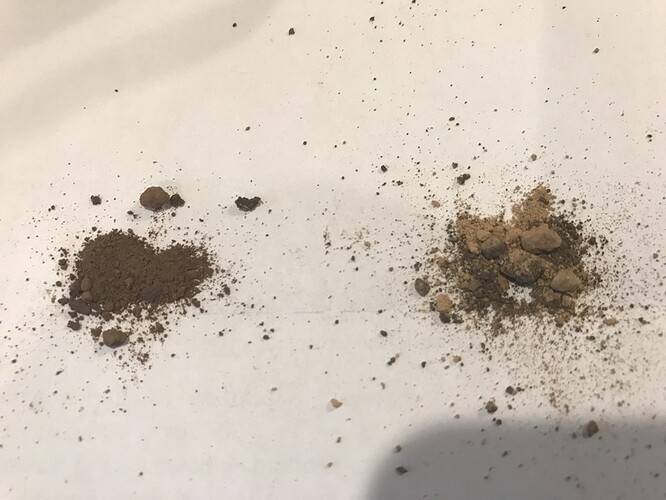In the BSOP monthly newsletter, longtime club member and ceramicist Mark Vossbrink offered for sale buckets of what he is calling Oregon Akadama. Being Akadama Curious, I immediately purchased a couple of buckets from him to see what he has found. The origins and location of the source material is still somewhat of a mystery shrouded in fine dusts.
First take on the material:
- Color difference from imported Akadama is dramatic. This material is much deeper/darker shade of reddish brown than imported Akadama. This color difference indicates that it is likely derived from weathered basalt and is much heavier in iron oxides than aluminum oxides.
Akadama on right
-
Bulk density is comparable, but is 0.8 g/ml to Akadama’s 0.7 g/ml, which supports the idea that iron predominates over aluminum.
-
Useable quantities in range of 1/4” to 1/20” (I don’t have a 1/16” screen) is about 90%, though there is some dust that comes with it.
-
Significant amount of organic debris and evidence of roots in quite a lot of the material…speaks to surficial deposit, not buried. In the picture, you can clearly see that roots penetrate some grains and are still attached.
-
Crush-ability is comparable to Akadama with some grains easily crushed and some grains more resistant to crushing by rolling between thumb and fingers.
This is an interesting candidate. Is it Akadama in the classic sense of the medium? No.
Is it a potential candidate for use in bonsai? Absolutely worth testing.
A good first attempt might be to combine it with pumice and a bit of scoria (40/40/20) and see what it does in the pot.
Next steps for me are to soak it and compare how a saturated sample compares to Akadama in durability and water absorption.



